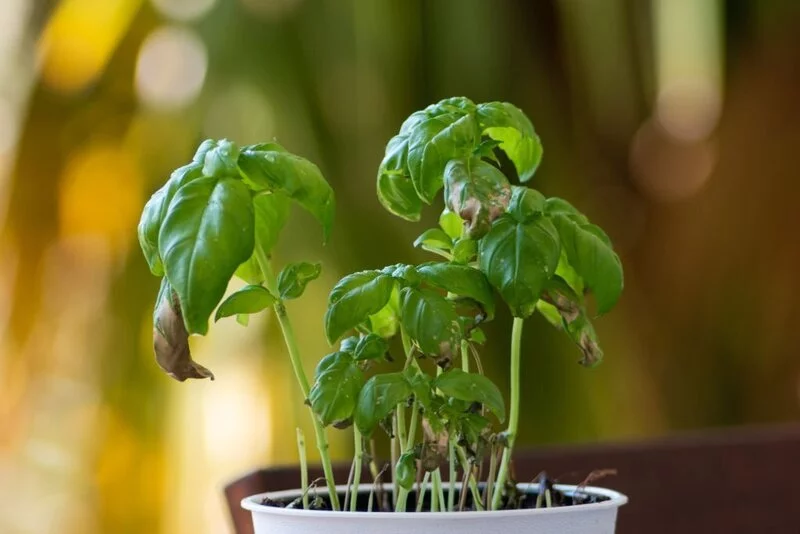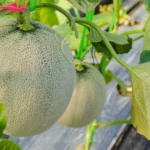Welcome! Today, we’re talking about one of the most loved herbs out there – basil! It’s a favorite in kitchens around the world, thanks to its amazing flavor and aroma. But what do you do if your once vibrant basil plant is now looking a little sad and wilted? Don’t worry, there’s hope yet. Let’s explore the magic of reviving your basil plant together.
Basil: A Brief Overview
Basil, known as the ‘King of Herbs,’ isn’t just known for its culinary uses. It also carries a symbolic significance in various cultures. This plant is a warm-weather, fragrant herb that hails from the mint family. With over 160 species, basil is quite a diverse group, but the one most commonly found in our homes is sweet basil. It loves sun, and it’s a great companion to your tomato plants.
- Annual herb Should be planted in full sun in light, well-drained soil.
- Plant super sweet Genovese 18 inches apart after the risk of frost has passed.
- When planting, dig a hold large enough to accommodate the entire root ball and cover with nutrient-rich soil.
- Keep Basil plants moist throughout the growing season. Mulch around plants to remain soil moisture.
- Harvest in 60 to 90 days.
Common Signs Your Basil Plant Needs Reviving
If you’re reading this, chances are your basil plant is sending some distress signals. Maybe it’s looking droopy, with leaves that were once a vibrant green now turning yellow. Perhaps it has spots or even brown edges. Or it could be that your basil isn’t growing as fast as it used to. These are signs that your basil is in need of some TLC, and with the right steps, you can bring it back to life. Let’s discover how!
- Miracle-Gro Water Soluble Plant Food Vegetables and Herbs includes natural ingredients
- Feeds instantly to promote big and beautiful results (vs unfed)
- Use Miracle-Gro soil plus plant food for even more harvest (vs unfed)
- Apply with a watering can or Miracle-Gro Garden Feeder
- Miracle-Gro Water Soluble Plant Food Vegetables and Herbs is great for tomatoes, squash, peppers, cucumber, carrots, basil and other herbs and vegetables
Essential Care Needs of a Basil Plant
Like every living thing, basil has its own needs too. To keep it in tip-top shape, remember that it loves the sun – six to eight hours of sunlight is what it desires. It also likes its soil slightly moist, but not soggy. Good drainage is key, as basil doesn’t like to keep its feet wet. Regular pruning, where you pinch off the tops of the plant, helps it grow bushy and gives you more of those flavorful leaves to enjoy.
How to Revive a Wilted Basil Plant: A Step-by-Step Guide
- Check if it’s thirsty: If your basil is wilted and droopy, it may just need a good drink. Water it thoroughly and wait to see if it perks up.
- Move it, if necessary: Is your plant getting enough sun or maybe too much of it? If it’s not in a sunny spot, move it somewhere brighter. If it’s in direct, hot sun, it might be getting sunburned. Try a spot with a bit of afternoon shade.
- Trim it: Trim off any leaves that are beyond saving – yellow or brown ones, or those with holes. This helps the plant focus its energy on new growth.
- 3 Cups / 1 quart of Tulsi Plant / Holy Basil Plant Potting Soil Mix. Soil is packed in a resealable clear poly zip bag. Soil can be stored in the bag as long as its kept dry.
- Custom hand blended soil prepared in Maryland, USA from Baby Violets.
- Can be used for Tulsi/ Holi Basil/Curry Leaf or Jasmine plants.
- 1 quart / 3 cup bag – can fill 15 (2″ pots) or 9 (3″ pots) or 4 (4″ pots). Please note, this is an estimate and the amount may vary slightly, based upon plant stem size and root size.
- Soil contains 50% peat moss & 50% perlite. There are no extra additives to this potting mix and no fertilizers. The perlite (super coarse), provides extra drainage and is chemically inert and sterile. This is a lightweight, airy soil mix. Not dense, compressed or compacted.
How to Revive an Overwatered Basil Plant
- Let it dry: If you’ve been a bit too generous with water and your basil is showing signs of overwatering (yellow leaves, black spots), the first thing to do is let the soil dry out. Hold off on watering until the top inch of soil is dry to touch.
- Check drainage: Ensure your plant’s pot has enough drainage holes. If it doesn’t, you may want to repot the basil into a pot that does.
- Remove damaged parts: Similar to wilted plants, trim off any leaves that are yellow or brown. They’re not likely to recover, and removing them helps the plant focus on new, healthy growth.
Remember, every plant is unique and may not respond immediately. Give your basil some time, keep an eye on it, and be patient. Before you know it, you’ll have your basil booming again!
How to Treat a Basil Plant with Pest or Disease Issues
Basil plants can sometimes play host to unwelcome guests like aphids, whiteflies, or even get affected by diseases like fusarium wilt. Here’s how you can deal with these issues:
- Inspect: Regularly check your basil for any signs of pests or diseases. Look under the leaves, a favorite hiding spot for many bugs.
- Natural treatments: If you find pests, try rinsing them off with a gentle spray of water first. You can also use insecticidal soap or a mixture of water and mild dish soap.
- Removal: If disease is present, like dark spots on leaves or a wilting plant despite proper watering, remove and discard the affected parts or even the whole plant if necessary to prevent the disease from spreading.
- Prevention: Keep your plant healthy as pests and diseases often attack stressed and weak plants. Rotate your crops if you’re growing in the garden to prevent soil-borne diseases.
Tips for Keeping Your Basil Plant Healthy
- Regular watering: Remember, basil likes its soil slightly moist. Check the top inch of soil and if it’s dry, it’s time to water.
- Adequate sunlight: Ensure your plant is getting six to eight hours of sunlight. If you’re growing indoors, a south-facing window is usually a good spot.
- Proper pot and soil: Use a pot with drainage holes to avoid waterlogged soil. A good-quality potting mix can make a big difference too.
- Regular feeding: Feed your basil every month with a balanced liquid fertilizer to keep it well-nourished.
- Pruning: Regularly pinch off the tops of the plant and any flowers that form. This keeps the plant bushy and promotes more leaf growth.
Conclusion
Reviving a struggling basil plant can be a labor of love, but the rewards of fresh, aromatic basil are well worth the effort. Remember, plants are like us – they have good days and bad days. The key is to give consistent care, be observant of changes, and respond accordingly. With a little time and patience, you’ll become the basil-growing expert in your neighborhood!








